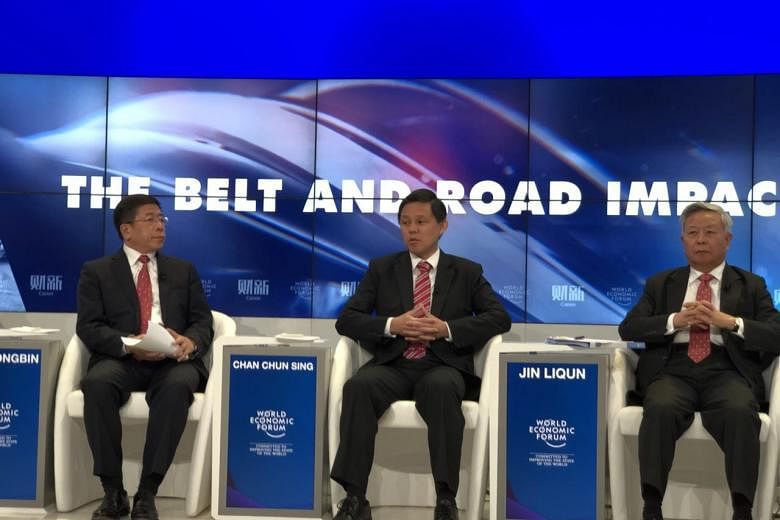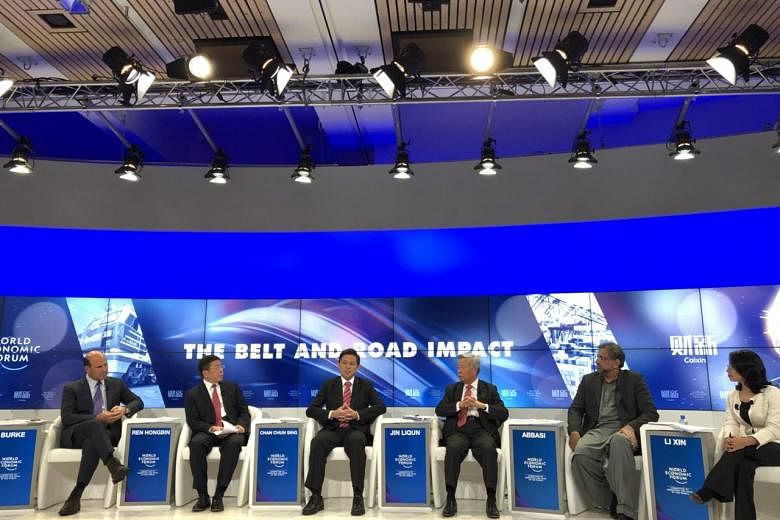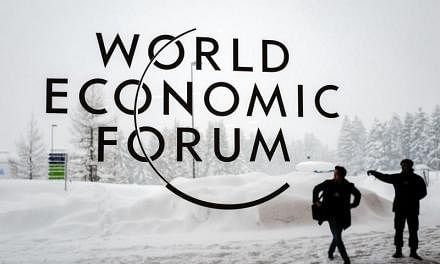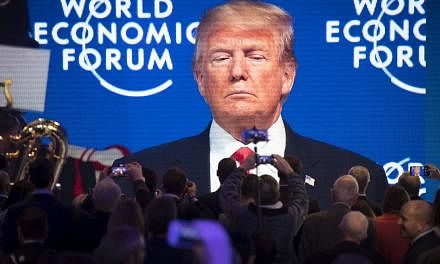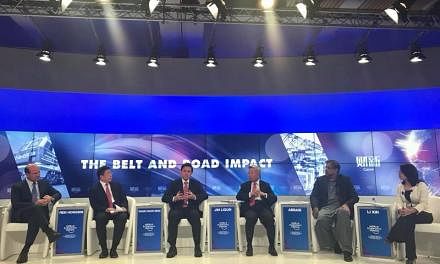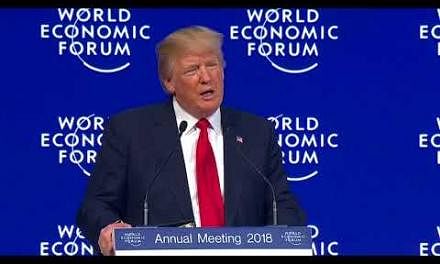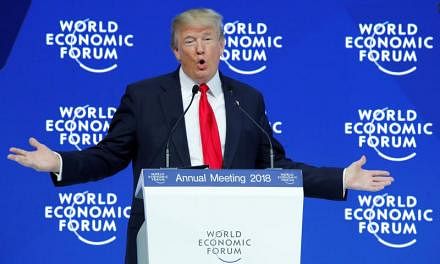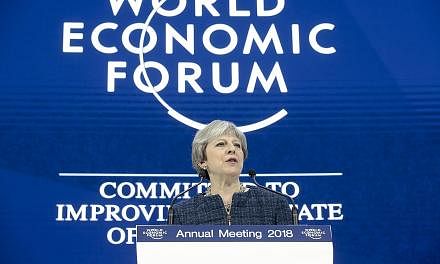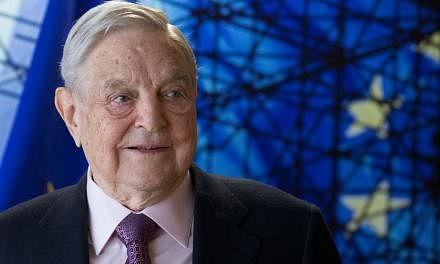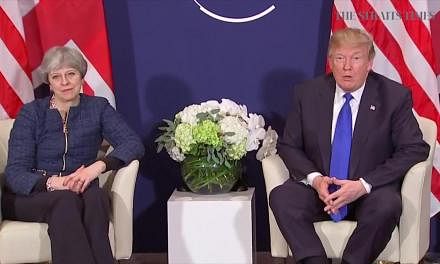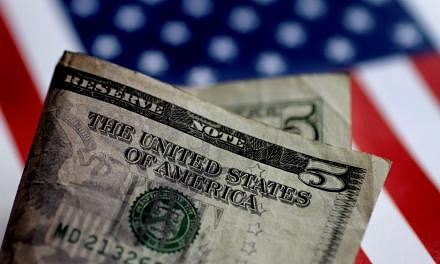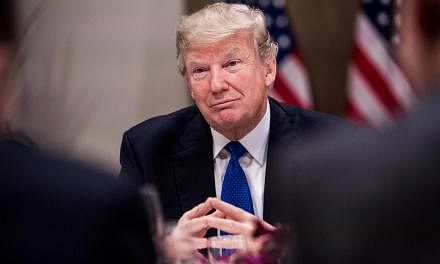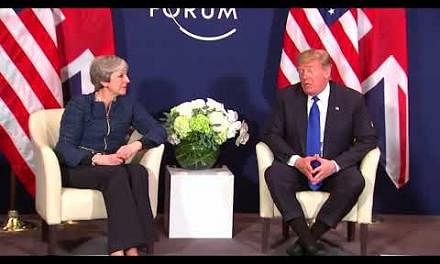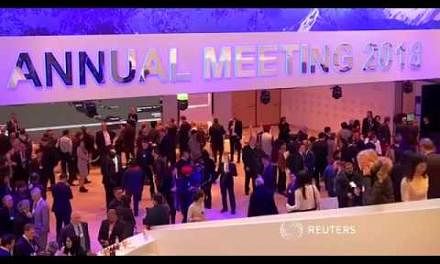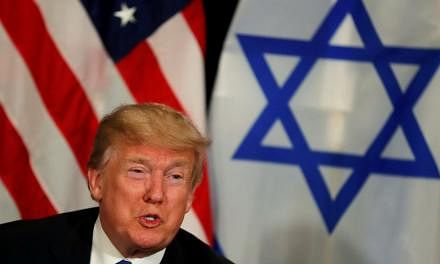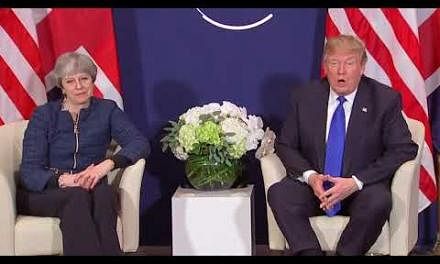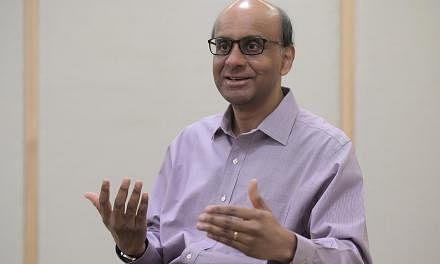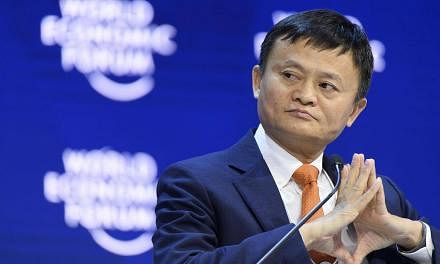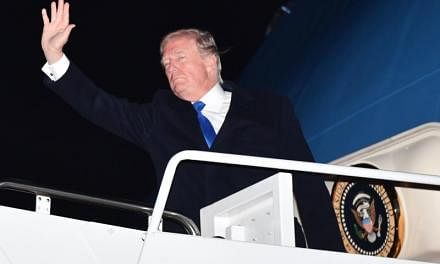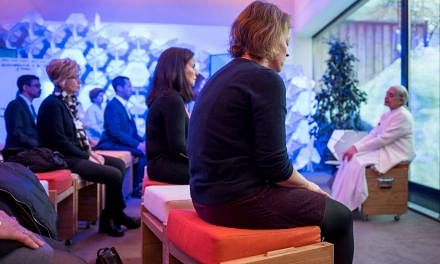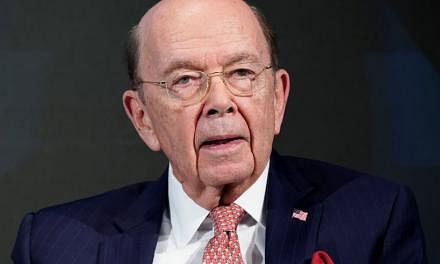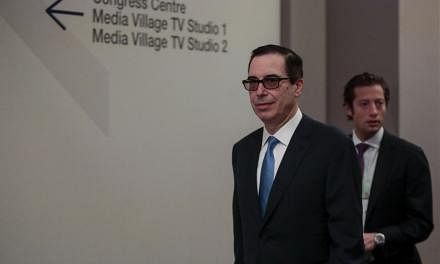Singapore can play a critical role in the China-led Belt and Road Initiative (BRI) as a global financial hub, providing the banking and legal support for projects as well as facilitating in the "software transfer" to ensure projects are sustainable once completed.
This was spelt out by Mr Chan Chun Sing, Minister in the Prime Minister's Office and NTUC chief, yesterday to an audience of top business and political leaders during a session at the World Economic Forum on the One Belt, One Road Initiative, a showpiece project of China's President Xi Jinping.
Noting that Singapore was happy to be working closely with China on this major initiative, Mr Chan added that Chinese officials often pointed to the 33-85 figure to remind their Singapore counterparts of the role the Republic plays.
This refers to the fact that 33 per cent of all outward investments related to the BRI flows through Singapore, while 85 per cent of inbound investments for the initiative makes it way into China through Singapore.
As a major financial hub, Singapore was able to do this, syndicating loans while also providing the legal framework for them, and also ensuring the transfer of management know-how to the local community.
He was speaking on a panel discussion which was organised by Chinese media group Caixin and included Pakistan's Prime Minister Shahid Khaqan Abbasi, Asian Infrastructure Investment Bank (AIIB) president Jin Liqun, and business leaders from China, Russia and the United States.
Taking up the question on how BRI projects might benefit local communities, Mr Chan said that these should aim to be economically viable and sustainable to begin with. In the mid-term, these should aim to be catalytic, uplifting communities by adding to their capacity, including the ability to take over and successfully manage projects and build on them once the foreign partners have moved on.
For the longer term, the projects should try to show the kind of power that China aimed to be in the world, one that seeks to use its power and position to build a global system that is inclusive and benefits societies around the world, he said.
"With China's growth, there is tremendous opportunity for China to do good for the rest of the world," he noted.
"This is an important historical opportunity for China to convince the rest of the world that actually its actions have a broader perspective of not just an immediate commercial gain to itself, or just to catalyse the local economy in the medium term. But more importantly, over the longer term, China is helping the world to build a better system that allows the world to participate in the next phase of growth for the world economy."
If China could use its growing power to do this, it would "win the trust and confidence of the world", he added, pointing to the phrase "yi de fu ren" mentioned by President Xi when he delivered a well-received speech in Davos last year. This refers to using one's abilities in a benevolent way to benefit the community. This, he argued, was the underlying philosophy of the BRI, as he saw it.
During the hour-long discussion, Mr Chan also cited the example of the Suzhou Industrial Park project, jointly developed by China and Singapore in the 1990s. What was more important than the physical structures of the industrial park was the intangible "software transfer" that took place behind the scenes.
The number of delegations that came to Singapore to learn about the system, and the number of delegations from Singapore that went to China to help build the project and transfer the software was as important as the park that was built. These were critical in ensuring the success of the project, and to replicating it elsewhere afterwards, he said.
Singapore, he added, had to work closely with its partners on the ground and consult them on what was needed at different stages of China's development, so that Singapore's efforts could continue to be relevant and add value to China.
After the industrial park development of the 1990s, Singapore moved on to focus on addressing China's growing environmental and sustainability concerns in the Tianjin Ecocity.
By 2010, China had again moved on, and Singapore sought to be helpful by working with it to unleash the potential of its inland western region, to balance off the previous focus on development in the coastal areas.
To do so, Singapore worked with its Chinese partners to find practical ways to lower the financing and logistics costs of operating in these inland areas so as to make them more economically competitive and attractive to investors, he said.
Making a similar point, AIIB's Mr Jin said the bank sought to deliver projects that not only were sustainable both economically and environmentally, but also had the support of the local community.
It strived to avoid the "malaise", often associated with public sector projects, of building white elephants that were more about "showing how wonderful politicians were" or building "giant toys" for them that did not benefit the community.
This was possible only through projects which had "broad consultation, joint construction and shared benefits", he said, citing a phrase often used by Mr Xi.
Mr Abbasi outlined the various infrastructure projects that China and his country had embarked on under the China-Pakistan economic corridor. These, he said, were a good way to help realise the vision for an "inclusive" global order that Mr Xi had spoken of in Davos.
Concluding, Mr Chan likened the work on the BRI to that of a bricklayer. His effort could be described as simply setting down a brick or, alternatively, as part of an effort to build a wall. But from another perspective, that same effort could be viewed as part of a longer term vision to build a cathedral, he said.
Mr Chan added he believed that China's leaders had the wisdom to view the BRI as a contribution to building an inclusive global order that benefits the world in the long run.
